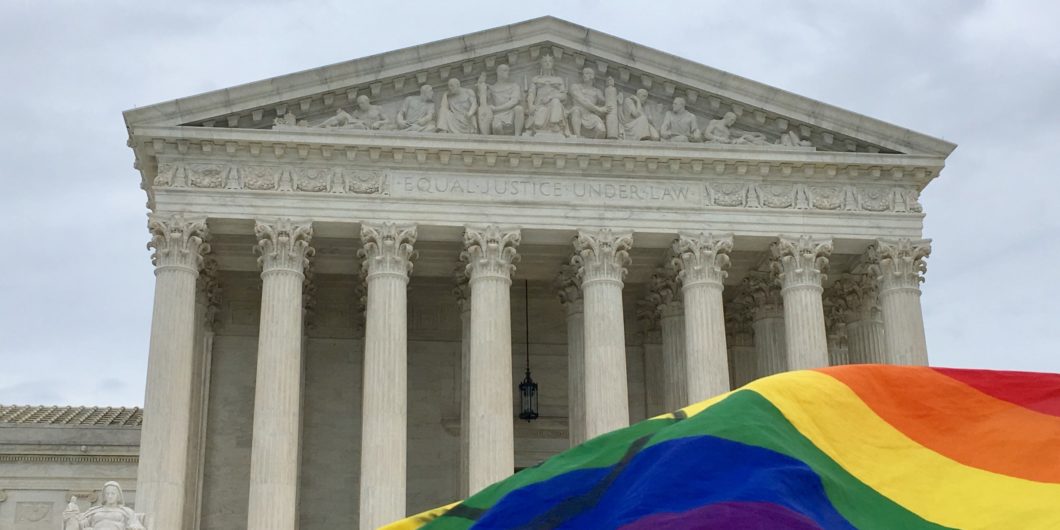There is no precedent for a measure like DACA, concretely debated and rejected by Congress, to have been, nonetheless, put into effect by the president.
Errors of Will and of Judgment
The law can be marred by both results-oriented decisions and honest, intellectual mistakes. Both kinds of distortions were on display at the Supreme Court last week. An example of the first kind of error was Homeland Security v. Regents of California. That case held that the Trump administration’s rescission of the Obama administration’s policy of not deporting certain young aliens here illegally and permitting them to join our labor force was “arbitrary and capricious.” The majority opinion contains self-contradictory reasoning and seems a transparent effort to avoid an unpopular ruling on the legality of Obama’s relief to a sympathetic group of young people, now routinely referred to as the “dreamers.” The opinion does not prevent the Trump administration from trying to rescind the Obama program again with different reasoning, but undoubtedly any such effort will be held up by the review of lower courts until after the election.
Bostock v. Clayton County exemplifies the second kind of error. That case held that Title VII of the Civil Rights Act made employment discrimination against homosexual and transgender individuals illegal. This decision embraces a desiccated literalism over a common-sense understanding of a text’s public meaning. Its author, Justice Neil Gorsuch, is sincerely mistaken because he has shown some such tendencies before. Bostock is just a particularly extreme example.
An Error of Will: DHS v. Regents of California
The plaintiffs in Regents of California challenged a decision of Elaine Duke, then Acting Secretary of Homeland Security, to rescind the program of Deferred Action Against Childhood Arrivals (DACA). Duke was following the direction of Attorney General Jeff Sessions who told her that DACA was illegal, noting that in Texas v. United States, the Fifth Circuit had invalidated a similar program for the parents of these youths who were also here illegally. That Fifth Circuit decision was later upheld by a divided Supreme Court.
In an opinion for a narrow 5-4 majority, Justice Roberts held that Duke’s decision was defective under the Administrative Procedure Act (APA). The opinion properly recognized that Duke was bound by the Attorney General’s decision on the illegality of DACA. But Roberts argued that Sessions should have been understood to be saying that only certain benefits, such as work authorization, were illegal—not that the decision to decline to enforce the deportation of a huge class of undocumented immigrants was also illegal.
The Court thus held that the Attorney General’s letter provided legal authority only to rescind the benefits. As a result, even if benefits such as work authorization were illegal, Duke should have separately considered the policy wisdom of continuing the forbearance of deportation. In other words, the Court’s majority said that Duke should have severed the question of rescinding the forbearance of deportation from the question of rescinding benefits.
The Court then held that the rescission as a whole was arbitrary and capricious under the APA because Duke had not considered the reliance interests of the young, undocumented immigrants now that they could live free from fear of deportation because of the Obama administration’s forbearance.
The majority’s reasoning is implausible and internally inconsistent. Sessions’ letter asserting DACA’s illegality was not, on its face, limited to the benefits. He never says anything of the kind. That was certainly not how Duke understood the letter. It is odd for the Court not to defer to an executive branch’s own understanding of an executive branch memorandum outlining what it believes the law to be.
But even if the Court was justified in relying on its own understanding of the letter, it acted inconsistently by requiring the Trump administration to sever the two issues (deportation and benefits) when it comes to the merits of the case, while failing to sever the two when considering the Court’s own authority to decide the matter. Before it can reach the merits of the Secretary’s decision, the majority must establish its right to review it. Decisions about whether to enforce the law (such as the decision to enforce or not enforce deportations) are generally committed to agency discretion. The Court, however, argued that what “confirms” that the Obama administration’s DACA program was not an unreviewable exercise of discretionary enforcement is the granting of the benefits, such as work authorization, that were associated with it.
The majority tried to bolster its argument that it could review the entire rescission by observing that the Obama administration had given detailed guidance on which young aliens should receive forbearance from deportation. But the amount of detail in guidance does not change the fact that the new administration was just exercising enforcement discretion, not something that is generally reviewable. Thus, the Court needed to emphasize the benefits that the undocumented immigrants received as an additional justification for its authority to review.
While Gorsuch’s opinion is much less open to moral criticism than Roberts’ opinion, it may in the long run prove the more troubling of the two.
Yet, as discussed above, the Court held that the question of enforcement was severable from that of the legality of the benefits. But if the two substantive questions are severable, the question of the Court’s authority to review each issue should also be severable. The existence of benefits cannot, therefore, confirm that the deportation issue is reviewable, because it should be separate from that question. Thus, if the majority followed its own analysis of severability, it should have held that the rescission of forbearance on deportation was unreviewable. That would have left the Trump administration’s decision to go back to enforcing the law on deportations undisturbed, leaving only the question of rescinding the benefits to be determined on the merits. In short, the majority opinion plays a bait-and-switch with its framework for severability, applying it to the question on the merits and yet ignoring it on the question of its own reviewing authority.
Its severability claim also casts doubt on its failure to uphold at least the portion of Duke’s order denying benefits to young aliens. Even if administrative actions are generally judged to stand or fall as a whole, it seems lawless for the Court to require that the administration continue any severable portion of a program that the administration concludes is unlawful, unless the Court affirmatively disagrees with that conclusion. But the majority declined to decide the legality of DACA on the flimsy claim that the question was not adequately briefed. The Supreme Court has ordered additional briefing in past cases and could have done so here.
An Error of Judgment: Bostock v. Clayton County
Bostock v. Clayton County concerned the interpretation of the following language of Title VII: it is “unlawful . . . for an employer to fail or refuse to hire or to discharge any individual, or otherwise to discriminate against any individual . . . because of such individual’s race, color, religion, sex, or national origin.” Writing for a 6-3 majority (which included the Chief Justice), Justice Gorsuch concluded that Title VII covered discrimination against homosexuals and transgender individuals. His reason was that in cases of such discrimination, the gender of the person discriminated against was a “but-for” cause of the discrimination. For instance, an employer discriminating against homosexuals would be happy to hire a man dating a woman but not a woman dating a woman. Thus, the employer discriminates between people of different sexes doing the same thing (dating a woman) and thus this action constitutes discrimination because of sex.
This is a conceivable interpretation of the words in some world. But it is not the best interpretation of the words in our world, and certainly not in the world in which Title VII was enacted. As Justice Samuel Alito wrote in dissent, in 1964 the kind of discrimination at issue in Bostock would have been referred to as discrimination because of sexual orientation—a separate concept from discrimination because of sex. (And transgender discrimination was not a concept discussed much, if at all, at the time). Alito correctly contrasts this understanding of sexual-orientation discrimination with the 1964 understanding of employment discrimination against those who were in interracial marriages or relationships. Despite the fact that an employment practice discriminating against those in an interracial marriage applied equally to both blacks and whites, objections to interracial marriage were widely and correctly understood to be proxies for racism and thus racial discrimination. But discrimination because of homosexuality, however wrong, was not then seen and is still not seen as sexism in another guise.
Gorsuch admits that even today most people would describe a company’s refusal to hire homosexuals as discrimination based on sexual orientation, not discrimination because of sex. And until very recently all appellate courts had so understood the language—a good focus group on what the public meaning was in 1964, since these courts were closer in time to Title VII’s enactment.
The only way Gorsuch can avoid conceding that Alito’s is a better interpretation is to read the language as a kind of computer code, divorced from the understanding that people would have given to the phrase “discriminate . . . because of the individual’s sex.” Indeed, just two days after the decision came down. Judge Don Willett of the Fifth Circuit captured (I think approvingly) Gorsuch’s mode of analysis with just this analogy: “In the Bostock majority’s view, language codified by lawmakers is like language coded by programmers. A computer programmer may write faulty code, but the code will perform precisely as written, regardless of what the programmer anticipated.”
But this kind of analysis depends on a mistaken understanding of natural language, even specialized legal language. It is emphatically not a computer code. It can only be understood through context. Consider what one of the foremost scholars of the philosophy of language, Scott Soames, says about legal interpretation. He argues that the narrow linguistic (read “literal”) meaning does not fully capture what the legislature “asserts” in a statute. This is not surprising, because linguistic communication always depends on the presuppositions and contexts that a speaker or groups of speakers share with their listeners. Just as in ordinary language, some matters are left unstated, so too in legislation. In this sense, communication in natural language is the opposite of a computer code where nothing is left unstated. To recapture that context, interpreters must be able to take account of matters, such as what problems the legislatures were addressing. Only then can one understand what they were asserting. That is why legal interpreters since Blackstone have warned that interpretation cannot descend into literalism.
Gorsuch dismisses the arguments that no one would have expected that language to be interpreted in this way, arguing that expected applications are not the same as the text’s meaning. And it is true that they are not the same. But they can provide important evidence of what the legislature meant its words to assert and thus what binds interpreters today.
While Gorsuch’s opinion is much less open to moral criticism than Roberts’ opinion, it may in the long run prove the more troubling of the two. Roberts’ opinion, being dependent on an unusual severability analysis, is written in a way that will likely not have much effect on many administrative decisions other than rescinding DACA. But Gorsuch’s decision defends an acontextual literalism that has the potential to sever more generally the connection between the legal interpretation of a text and the people who made and understood it. Interpretation remains a humanistic enterprise, not a purely technical or mechanistic one.



